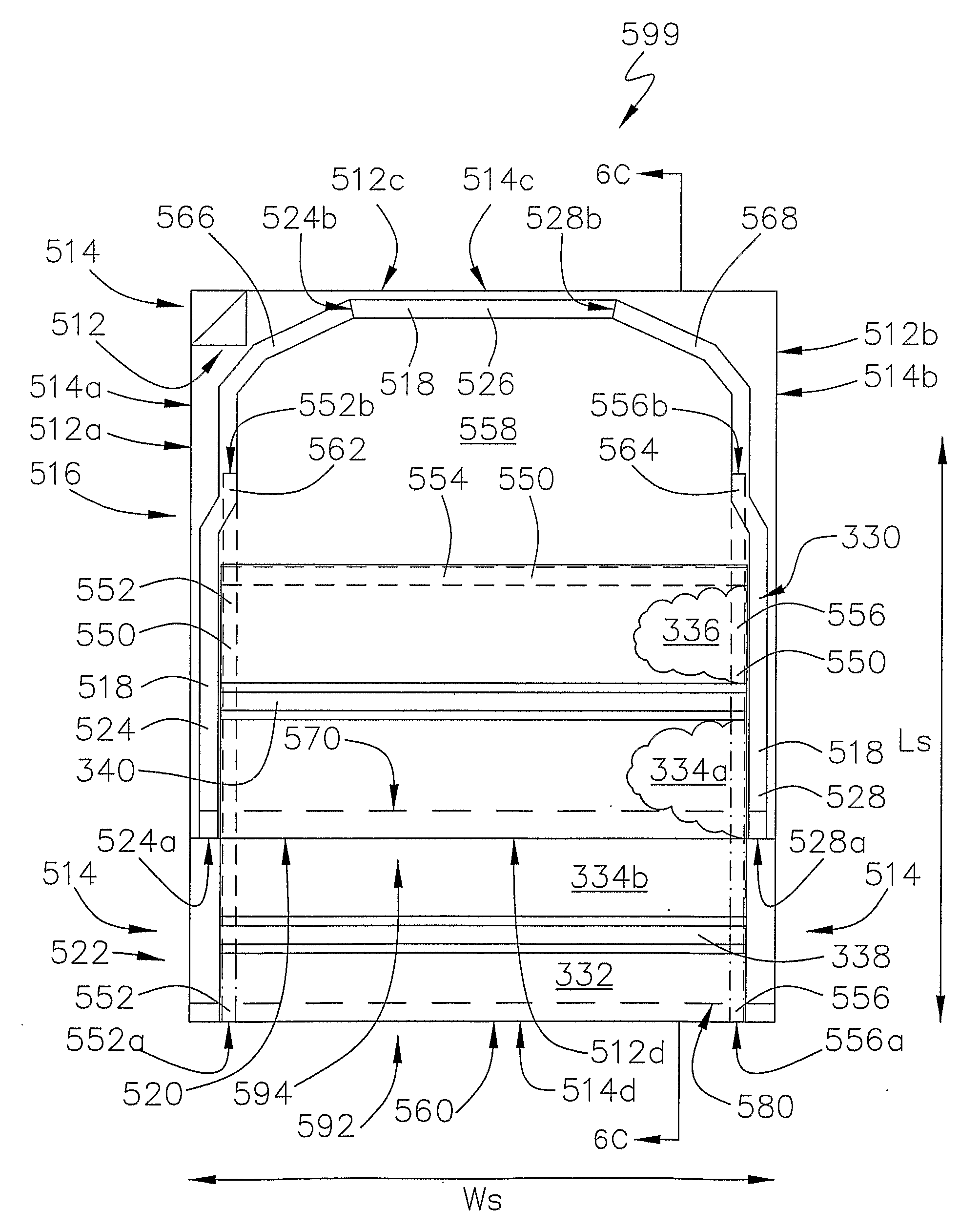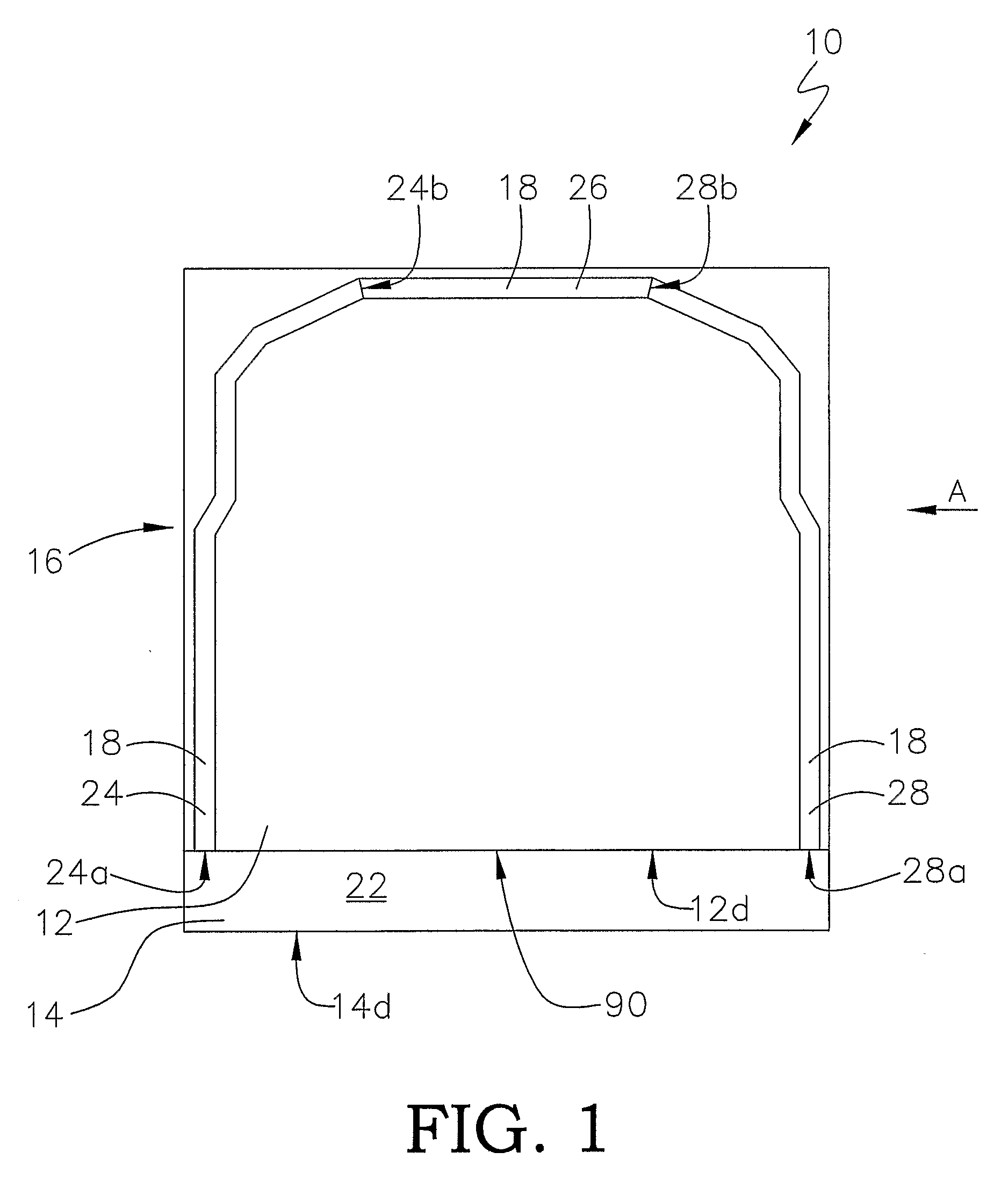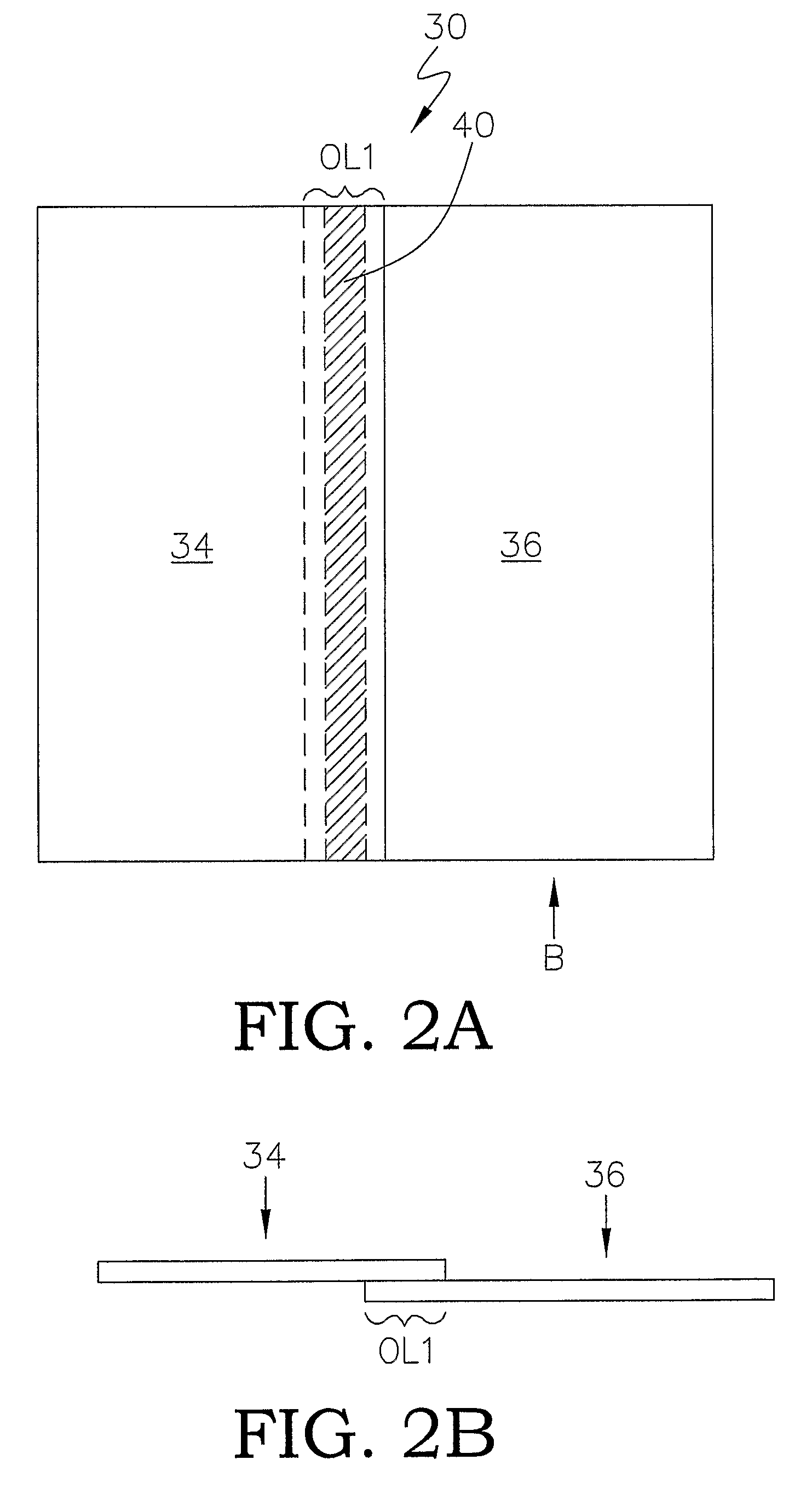Sterilizable Package With A High Barrier To Oxygen
- Summary
- Abstract
- Description
- Claims
- Application Information
AI Technical Summary
Benefits of technology
Problems solved by technology
Method used
Image
Examples
first embodiment
[0033]FIG. 2B is a side view of this first embodiment of the third layer 30, from the direction indicated by arrow B in FIG. 2A. This third layer 30 may have a total thickness from about 75 microns to about 225 microns. However, the thickness is not limited to these dimensions. Greater and lesser dimensions are contemplated.
[0034]FIG. 3A is a plan view of a second embodiment of the third layer. This second embodiment of the third layer 330 is similar to the first embodiment depicted in FIG. 2A and FIG. 2B but further comprises a third section 332. In this second embodiment, the first section 336, the second section 334 and the third section 332 are arranged side-by-side in a co-planar manner with the second section 334 positioned between and connecting the first section 336 and the third section 332. The second section 334 overlaps both the first section 336 and the third section 332 along opposite sides, at OL3 and OL2, respectively. The first section 336 and the second section 334...
second embodiment
[0035]FIG. 3B is a side view of this second embodiment of the third layer 330, from the direction indicated by arrow C in FIG. 3A. This third layer 330 may have a total thickness from about 75 microns to about 225 microns. However, the thickness is not limited to these dimensions. Greater and lesser dimensions are contemplated.
[0036]Various materials may be used for the three layers and the sections thereof. Gurley Hill porosity values may be used to select the materials. “Gurley Hill porosity” refers to the air resistance of an approximately 6.45cm2 (1 in2) circular area of test sample using a pressure differential of 1.22 kPa and is measured in accordance with International Standard ISO 5636-5, “Paper and board—Determination of air permeance and air resistance (medium range)—Part 5: Gurley method.” Gurley Hill porosity values are reported in the amount of time (seconds) required for 100 cm3 of air to pass through the test sample. In general, Gurley Hill porosity values indicate th...
PUM
 Login to View More
Login to View More Abstract
Description
Claims
Application Information
 Login to View More
Login to View More - R&D
- Intellectual Property
- Life Sciences
- Materials
- Tech Scout
- Unparalleled Data Quality
- Higher Quality Content
- 60% Fewer Hallucinations
Browse by: Latest US Patents, China's latest patents, Technical Efficacy Thesaurus, Application Domain, Technology Topic, Popular Technical Reports.
© 2025 PatSnap. All rights reserved.Legal|Privacy policy|Modern Slavery Act Transparency Statement|Sitemap|About US| Contact US: help@patsnap.com



